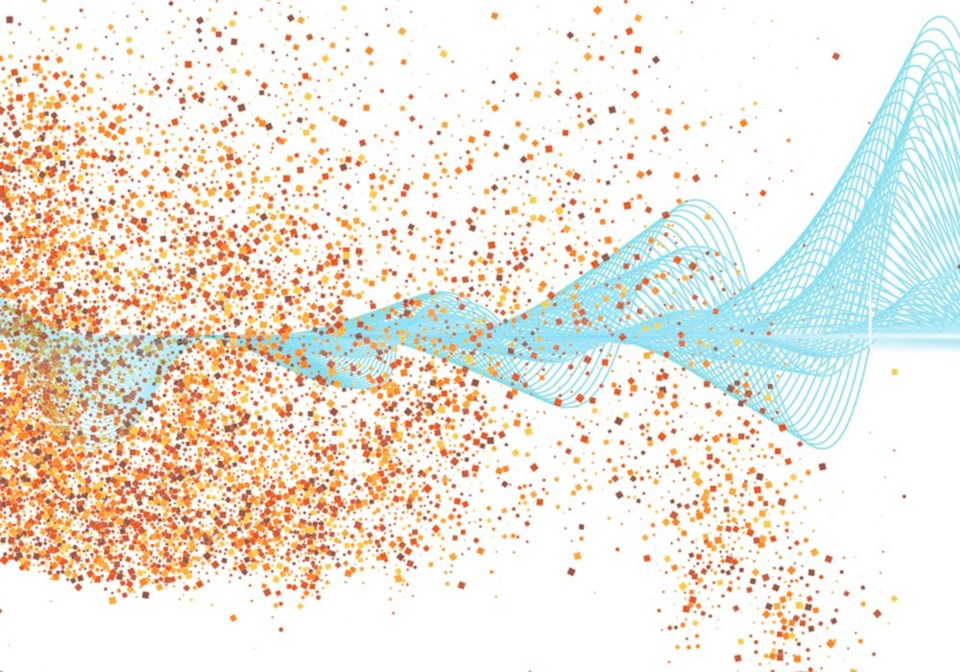WESTERN PRODUCER — Few farmers can likely envision using radio waves to dry grain one decade into the future.
But Kevin Eichhorn not only envisions such radical radio frequency drying technology, he’s building it.
The Eden Prairie, Minn., inventor connects an off-the-shelf radio frequency wave generator to his dryer using a coaxial cable. He calls the technology Forcefield drying. His company is called Dry Max Solutions.
Because the system removes water without heat, Eichhorn has eliminated the need for fuel. He points out that no fuel means less cost, less environmental impact and less danger to the operator.
While some critics have interpreted his concept as breaking up H20 molecules, Eichhorn says that’s not the case.
The water molecules remain intact. But they are separated from each other by radio waves. The hydrogen bond forces water molecules to have a strong desire to remain close to each other. If that community bond can be weakened or broken by radio waves, they become free to leave the grain kernel and float in the air. A fan removes the liberated H20 vapour molecules.
Radio frequency drying isn’t new. It’s been used in the industrial sector for ceramics, fibreglass, foam and paper. Eichhorn’s challenge was to dial in the right radio station frequency for drying biomass.
“I spent a number of years in the wood chip industry. I worked with highly capital-intensive equipment. It cost so much to put in the fire-retardant systems. Conventional drying of biomass requires so much heat. We had explosions and fires and the threat to human life.
“I decided that if I could find a way to dry biomass without heat, then I could change the world,” said Eichhorn during a phone interview.
“What I found was that radio wave energy could be a replacement for heat when you’re liberating water and keeping the material cool.
“Dry Max first targets the highest moisture spots in a kernel. Radio waves dry the kernel from the inside out. Our waves pass through the tough shell. Instead of drying from the outside in with heat, we push water out from the inside with energy waves.”
Eichhorn said initial investment in a Forcefield dryer will be about double that of a conventional dryer. However, that higher investment will be covered by lower energy operating costs.
Responding to the charge that Forcefield drying is simply replacing expensive fossil fuel energy with expensive electric energy, Eichhorn conceded this could be an issue. If the alternative energy source is as expensive as the conventional energy source, it takes away much of the incentive.
In Minnesota however, the numbers pencil out in favor of Dry Max.
“The cost of electricity works out to be way less than the cost of propane. That will change, depending on where you farm. Here, hydro power is relatively cheap. Solar is cheap. Fossil fuel is not cheap anywhere.”
The actual Dry Max unit itself doesn’t look like anything special. It’s basically a conventional tower dryer, but without an obvious heat source. He said a definite cost per bushel has yet to be determined, but he expects it to be under 10 cents per bushel at 10 points.
After four years, Eichhorn has tested his radio frequency dryer technology on more than 40 feedstocks, including most grains, fruit, nuts, industrial materials, wood chips and other biomass materials.
Eichhorn has two pre-commercial patents on his invention. He won’t disclose the technical details. He’s right now in the early stages of his first production run of four Dry Max dryers, which will be available for sale this coming winter or spring.
“We would love to put a couple units into Manitoba. We’d like to work with any Canadian farmer who wants to be a co-operator at this early stage while we’re looking for feedback. Like any tower dryer, it can be sized to meet a producer’s needs.”

